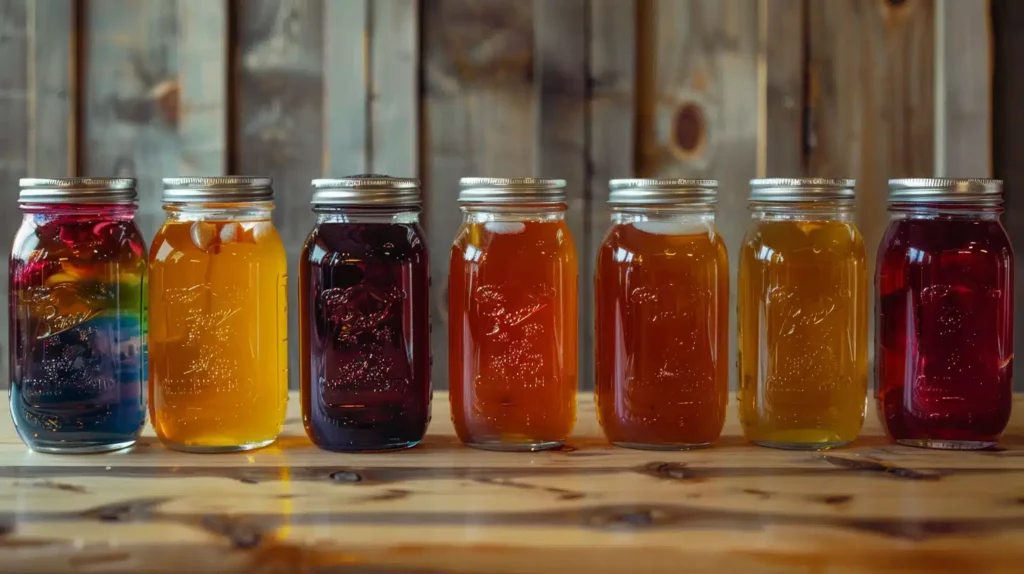
Moonshine, a potent distilled spirit often associated with clandestine production, possesses a flavor profile that is as diverse as its history. While some might perceive it as a harsh and fiery concoction, others find it surprisingly smooth with subtle hints of sweetness or fruitiness. This article delves into the fascinating world of moonshine taste, exploring the factors that contribute to its unique character and the variations you might encounter.
This exploration will cover the core elements influencing moonshine’s flavor, from the ingredients used in its creation to the intricacies of the distillation process. We’ll also examine the spectrum of taste experiences, ranging from the intensely bold to the surprisingly mellow, and discuss how the lack of regulation can lead to a truly unpredictable drinking experience.
Moonshine Flavor Profile
Moonshine’s flavor profile is often described as robust and intense, reflecting its high alcohol content and the traditional distillation methods employed. The base spirit typically carries notes of grain, particularly corn, which lends a characteristic sweetness and earthy undertone. However, depending on the specific recipe and regional variations, other grains like rye or wheat might be incorporated, adding complexity to the flavor profile.
Beyond the base grain, moonshine can exhibit a range of additional flavors depending on the ingredients added during fermentation or aging. Some producers incorporate fruits like apples, peaches, or berries, imparting a fruity sweetness and aroma. Others experiment with spices such as cinnamon, nutmeg, or cloves, creating warm and inviting notes. The absence of standardized production methods allows for endless creativity and experimentation, resulting in a diverse array of flavor profiles.
Ingredients and Distillation Process
The foundation of moonshine’s unique taste lies in the carefully selected ingredients and the meticulous distillation process. Traditionally, corn mash is used as the primary base, fermented with yeast to convert the starches into alcohol. The type of corn, its milling technique, and the fermentation duration all contribute to the initial flavor profile of the wash.
Distillation plays a crucial role in concentrating the alcohol and refining the taste. Moonshine is typically distilled in copper pot stills, which impart a distinct metallic note to the spirit. Multiple distillations are often performed to achieve the desired potency and purity. The temperature control during distillation also influences the final flavor profile, with higher temperatures extracting more volatile compounds that contribute to the intensity of the taste.
Taste Variations: Harsh vs. Smooth
The perception of moonshine’s taste can vary significantly depending on factors such as the ingredients used, the distillation process, and personal preference. Some individuals describe what does moonshine taste as harsh and fiery, with a strong burn that lingers on the palate. This often stems from the high alcohol content and the presence of congeners, which are byproducts of fermentation and distillation that contribute to the spirit’s flavor complexity.
Conversely, others find moonshine surprisingly smooth and mellow, with a more refined taste profile. This can be attributed to factors like careful aging in oak barrels, which imparts woody and vanilla notes, or the use of filtration techniques that remove harsh congeners. The smoothness also depends on the individual’s tolerance for alcohol and their familiarity with strong spirits.
Factors Influencing Smoothness
Several factors contribute to a smoother moonshine experience:
- Aging: Storing moonshine in oak barrels allows it to mellow over time, softening its edges and imparting complex flavors.
- Filtration: Filtering the spirit through charcoal or other materials can remove impurities and harsh congeners, resulting in a cleaner taste.
- Dilution: Adding water to moonshine can reduce its alcohol content and make it more palatable for some individuals.
Sweetness and Fruity Notes
While corn provides a base sweetness to moonshine, many producers enhance this characteristic by incorporating fruits during fermentation or aging. Apples, peaches, berries, and even citrus fruits are commonly used to add a layer of fruity sweetness and aroma. These additions create variations that range from subtly sweet to intensely fruity, depending on the type and quantity of fruit used.
The sweetness in moonshine can also be influenced by the type of yeast employed during fermentation. Some yeasts produce more esters, which contribute to fruity and floral notes, enhancing the overall sweetness profile. The balance between grain sweetness and fruitiness is a key factor in creating a well-rounded and enjoyable moonshine experience.
Inconsistent Flavors Due to Lack of Regulation
One of the most intriguing aspects of moonshine is its inherent inconsistency. Unlike commercially produced spirits, which adhere to strict regulations and quality control measures, moonshine production often operates outside these frameworks. This lack of standardization can lead to a wide range of flavor variations from batch to batch, even within the same distillery.
The ingredients used, the distillation techniques employed, and even environmental factors like temperature and humidity can influence the final taste. This unpredictability adds an element of adventure to consuming moonshine, as each sip can be a unique exploration of flavor. While some may find this inconsistency frustrating, others appreciate the artisanal nature and the thrill of discovering unexpected nuances in every bottle.
Conclusion
Moonshine’s flavor profile is a captivating tapestry woven from diverse ingredients, meticulous distillation processes, and the absence of strict regulations. From its robust base notes of corn to the subtle hints of fruitiness and spice, what does moonshine taste offers a truly unique sensory experience. Whether you encounter a fiery and intense spirit or a surprisingly smooth and mellow concoction, each sip of moonshine is a testament to the artistry and ingenuity of its creators. The unpredictable nature of its flavor adds an element of adventure, making every bottle a journey into the unknown.
